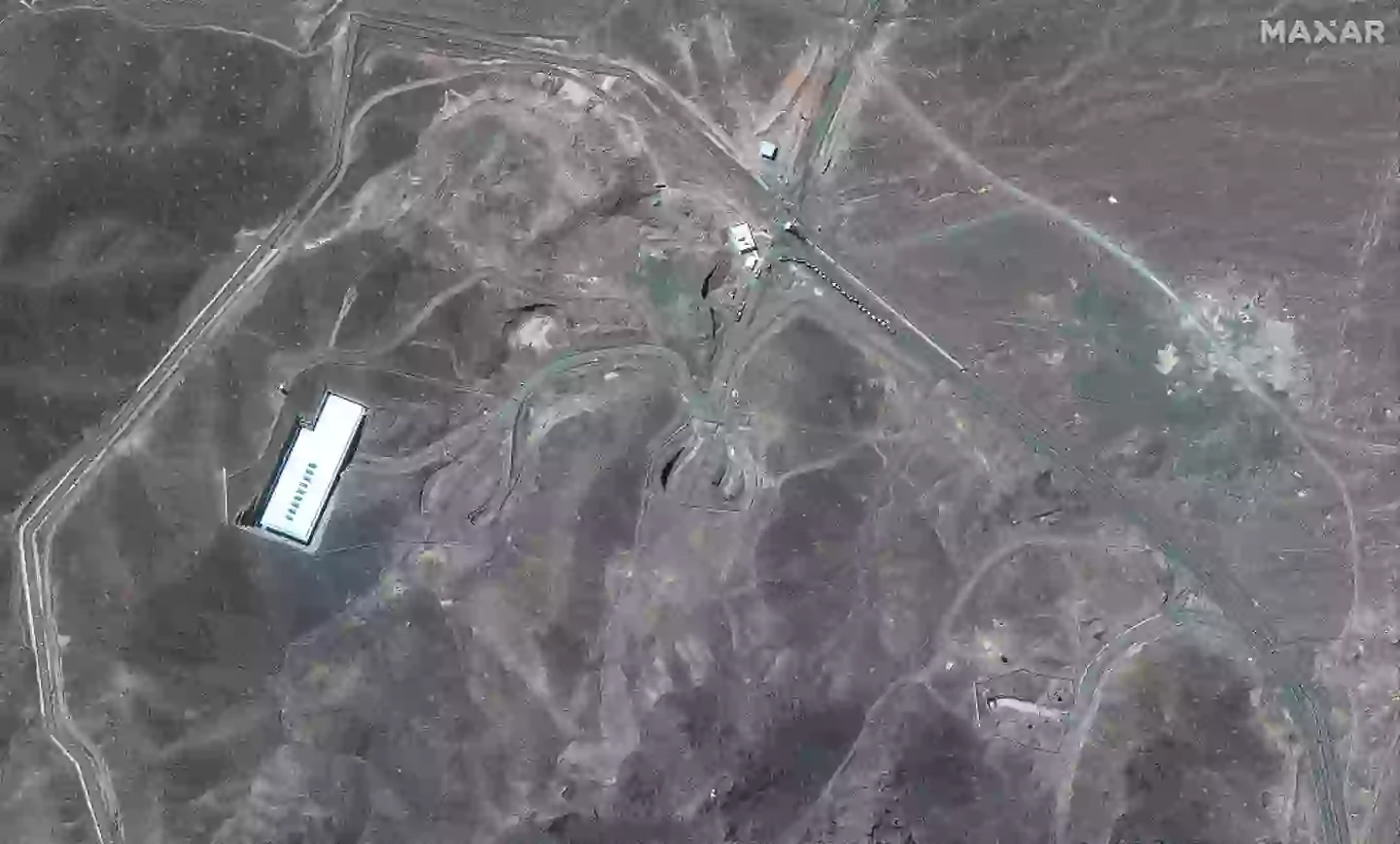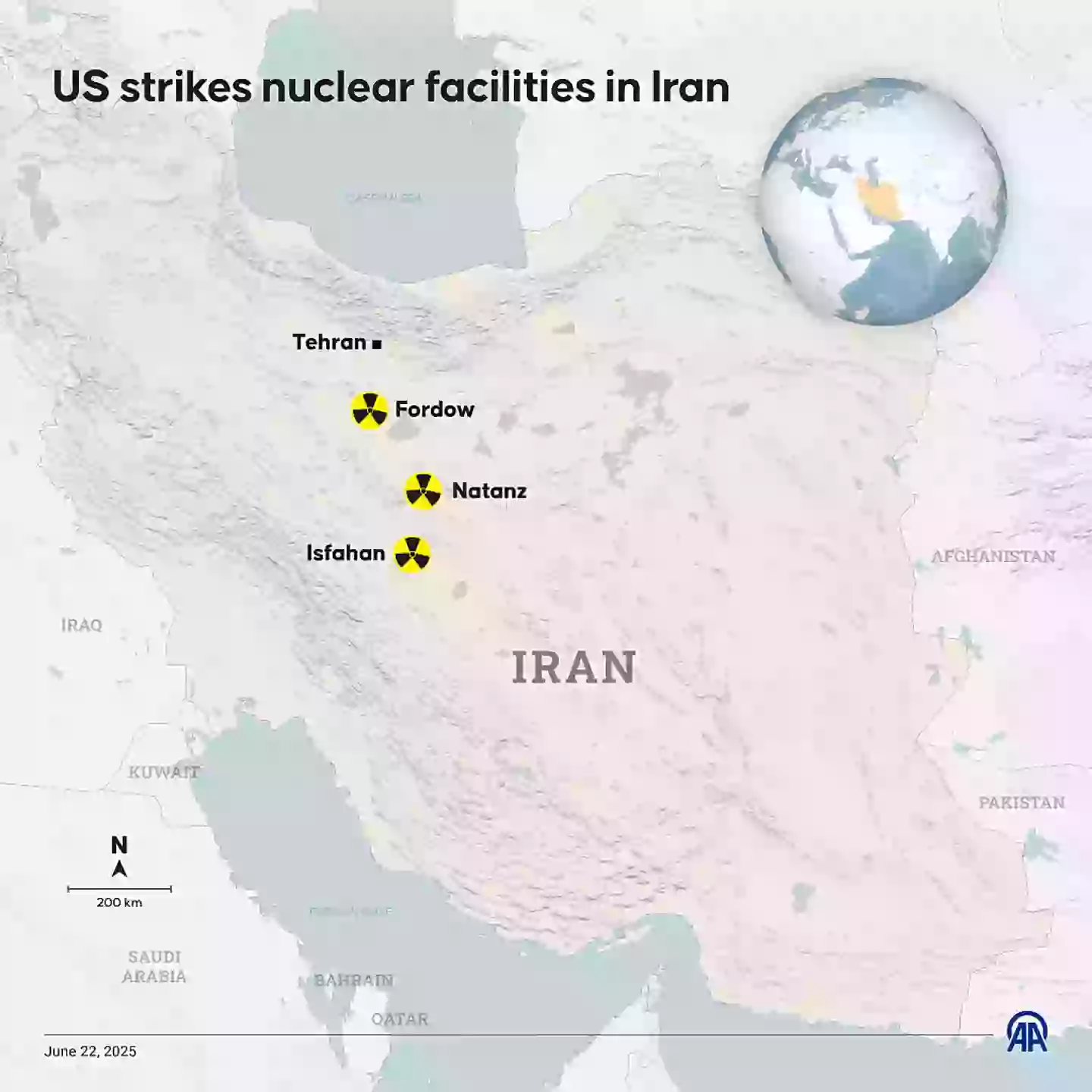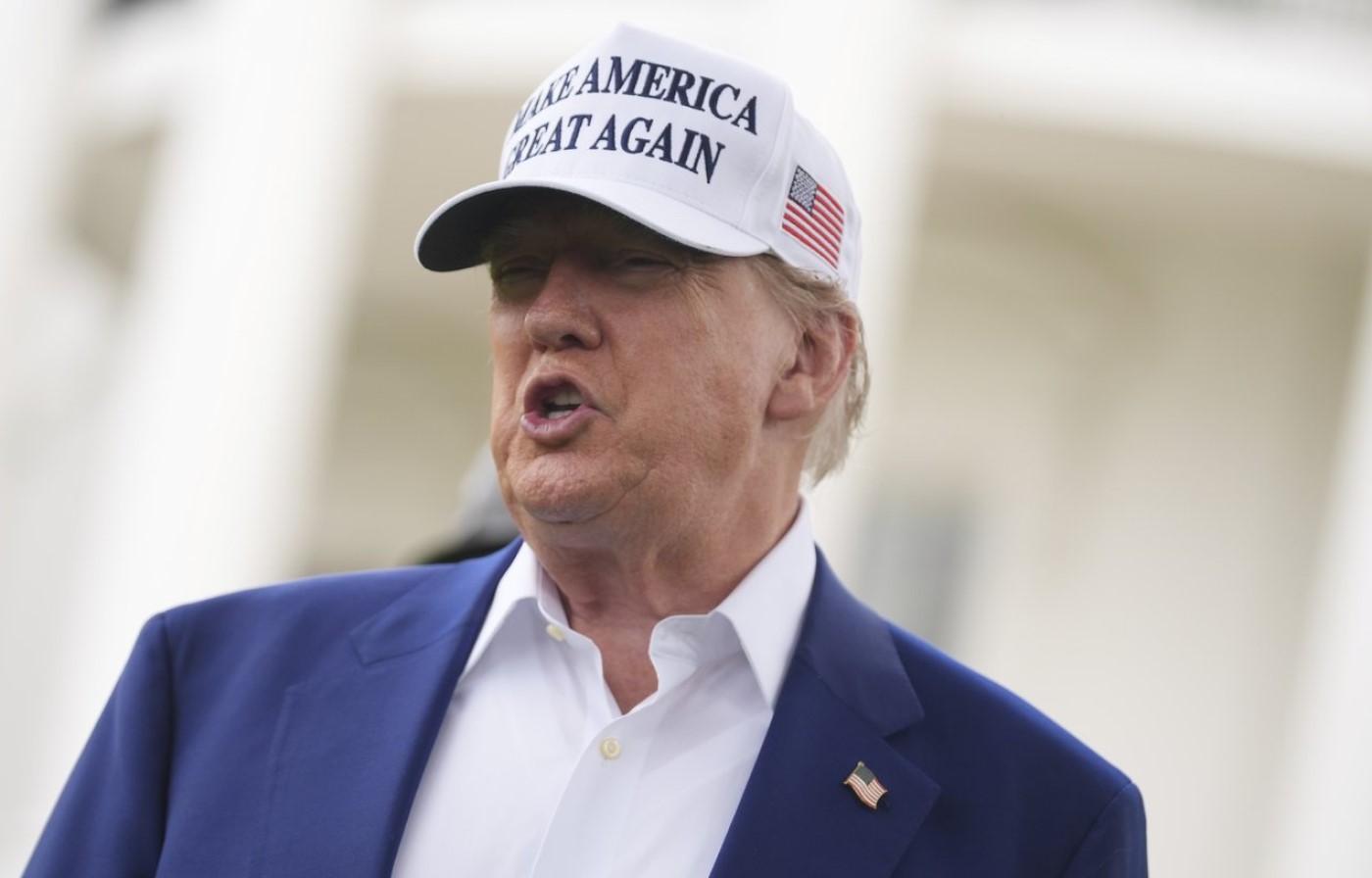Military Action Authorized After Intelligence Reports Indicate Iran Days Away From Nuclear Weapons Capability
Washington, D.C. — President Donald Trump has issued a forceful warning to Iranian leadership regarding potential retaliation following the United States’ overnight military strikes against three critical Iranian nuclear facilities. The escalating exchange of threats between the two nations comes after international nuclear monitoring organizations reported that Iran was approaching a critical threshold in weapons-grade uranium production capability.
The military action, which President Trump described as a complete success, targeted Iran’s most strategically important nuclear installations amid growing international concerns about the Islamic Republic’s nuclear weapons development timeline. The strikes represent the most significant direct military confrontation between the United States and Iran in decades, raising serious questions about regional stability and the future of nuclear non-proliferation efforts.
Intelligence Reports Trigger Military Response
The decision to authorize military strikes was precipitated by alarming intelligence assessments from multiple international monitoring organizations. The Institute for Science and International Security (ISIS), a prominent non-profit nuclear watchdog, issued a comprehensive report on June 9 that detailed Iran’s rapidly advancing nuclear capabilities and dramatically compressed timeline for weapons development.

According to the ISIS analysis, Iran’s primary nuclear facility at Fordow had achieved the technical capability to produce weapons-grade uranium (WGU) within a matter of days rather than the months or years previously estimated by international observers. This assessment represented a fundamental shift in the strategic calculation surrounding Iran’s nuclear program and the international community’s response options.
The report’s findings indicated that Iran had systematically advanced its uranium enrichment capabilities to levels far exceeding any legitimate civilian nuclear power requirements. Natural uranium typically contains approximately 0.7 percent of the fissile isotope uranium-235, which must be enriched to roughly 3.5 percent for use in nuclear power reactors. However, Iran had been enriching uranium to 60 percent purity and accumulating substantial stockpiles of this highly enriched material.
Nuclear Breakout Timeline Analysis
The ISIS report provided detailed projections regarding Iran’s nuclear weapons production capacity that shocked international security experts. According to their technical analysis, Iran’s nuclear infrastructure had reached a point where rapid weapons development had become not only possible but imminent.
“Iran could produce its first quantity of 25 kg of weapons-grade uranium in Fordow in as little as two to three days,” the report stated, representing a dramatic acceleration from previous estimates. The assessment continued with increasingly alarming projections about sustained production capabilities.

The analysis indicated that operating both the Fordow facility and the Natanz Fuel Enrichment Plant simultaneously, “the two facilities together could produce enough WGU for 11 nuclear weapons in the first month, enough for 15 nuclear weapons by the end of the second month, 19 by the end of the third month, 21 by the end of the fourth month, and 22 by the end of the fifth month.”
These projections suggested that Iran had achieved a nuclear breakout capacity that could rapidly transform the Middle Eastern strategic balance and pose unprecedented threats to regional and global security.
Presidential Authorization and Military Operation
In response to these intelligence assessments, President Trump authorized coordinated military strikes against Iran’s three most critical nuclear facilities: Fordow, Natanz, and Isfahan. The operation utilized advanced stealth bomber aircraft and precision-guided munitions designed specifically to penetrate heavily fortified underground installations.
During his address to the nation following the completion of the operation, President Trump outlined the strategic rationale for the military action. “A short time ago the US military carried out massive precision strikes on the three key nuclear facilities in the Iranian regime – Fordow, Natanz, and Isfahan, everybody heard those names for years as they built this horribly destructive enterprise,” the President declared.
The President’s characterization of Iran’s nuclear program as a “horribly destructive enterprise” reflected the administration’s assessment that diplomatic efforts to constrain Iranian nuclear development had failed and that military intervention had become necessary to prevent weapons acquisition.
Iranian Response and Diplomatic Condemnation
Iranian leadership responded to the military strikes with immediate condemnation and threats of significant retaliation. Foreign Minister Seyed Abbas Araghchi issued a comprehensive statement via social media platforms, characterizing the American action as a fundamental violation of international law and the United Nations Charter.
“The United States, a permanent member of the United Nations Security Council, has committed a grave violation of the UN Charter, international law and the NPT by attacking Iran’s peaceful nuclear installations,” Araghchi stated in his official response. The foreign minister’s reference to the Nuclear Non-Proliferation Treaty (NPT) reflected Iran’s longstanding position that its nuclear program serves exclusively civilian purposes.
Araghchi escalated his rhetoric by warning of lasting consequences for American actions. “The events this morning are outrageous and will have everlasting consequences. Each and every member of the UN must be alarmed over this extremely dangerous, lawless and criminal behavior,” he declared.
The Iranian foreign minister concluded his statement by invoking the United Nations Charter’s self-defense provisions, stating that “Iran reserves all options to defend its sovereignty, interest, and people.” This language suggested potential Iranian retaliation against American interests, personnel, or allies in the region.
Presidential Counter-Warning
President Trump responded to Iranian threats with his own forceful warning, delivered via his Truth Social platform approximately two hours before the Iranian foreign minister’s statement. The President’s message represented a clear escalation in the rhetoric surrounding potential retaliation and counter-retaliation between the two nations.
“Any retaliation by Iran against the United States of America will be met with force far greater than what was witnessed tonight,” Trump declared in his social media post. The President’s warning suggested that the initial strikes represented only a fraction of American military capabilities available for deployment against Iranian targets.
The President concluded his message with his characteristic signature: “Thank you! Donald J. Trump, President of the United States,” emphasizing the personal nature of his commitment to respond to any Iranian retaliation with overwhelming force.
Technical Analysis of Iran’s Nuclear Program
Understanding the strategic significance of the military strikes requires examination of Iran’s nuclear development trajectory and the technical capabilities that prompted international concern. Iran’s uranium enrichment program had systematically exceeded all requirements for civilian nuclear power generation, raising serious questions about weaponization objectives.
The key technical threshold involved uranium enrichment levels. While civilian nuclear reactors require uranium enriched to approximately 3.5 percent, weapons development typically requires enrichment to 90 percent or higher. Iran’s achievement of 60 percent enrichment represented completion of approximately 80 percent of the technical work required for weapons-grade material production.
This technical progression meant that Iran could rapidly transition from its current enrichment levels to weapons-grade uranium with minimal additional effort and time. The ISIS report’s assessment that such transition could occur within days rather than months fundamentally altered the strategic calculus governing international responses to Iran’s nuclear program.
Regional and Global Security Implications
The military confrontation between the United States and Iran carries significant implications for regional stability and global nuclear non-proliferation efforts. The Middle East already faces multiple ongoing conflicts, and the addition of direct American-Iranian military confrontation introduces new variables that could destabilize the entire region.
Regional allies, including Israel and Saudi Arabia, have expressed support for efforts to prevent Iranian nuclear weapons acquisition but also concern about the potential for expanded conflict. The strikes could trigger Iranian retaliation against these allies, drawing them into a broader regional conflict.
From a global perspective, the American military action raises questions about the international legal framework governing preemptive strikes against nuclear facilities. While the United States argued that Iran’s proximity to weapons capability justified military intervention, other nations may view the action as setting concerning precedents for future conflicts.
International Legal and Diplomatic Context
The strikes occur within a complex international legal framework governing the use of force and nuclear non-proliferation efforts. The United States has argued that Iran’s violations of its NPT obligations and movement toward weapons development justify military action under self-defense principles.
However, Iran’s characterization of the attacks as violations of international law reflects genuine legal complexity surrounding preemptive military action against nuclear facilities. The United Nations Charter generally prohibits the use of force except in cases of immediate self-defense or with Security Council authorization.
Conclusion
The exchange of threats between President Trump and Iranian leadership following the nuclear facility strikes represents a critical juncture in Middle Eastern security dynamics and global nuclear non-proliferation efforts. The President’s warning of “force far greater” than the initial strikes, combined with Iran’s threats of “everlasting consequences,” suggests that the current crisis may be entering a new and more dangerous phase.
The underlying trigger for this escalation—Iran’s rapid approach to nuclear weapons capability—reflects the failure of previous diplomatic efforts and sanctions regimes to constrain Iranian nuclear development. Whether the current military action will prove sufficient to eliminate Iran’s nuclear weapons potential or will instead trigger a broader regional conflict remains to be determined.
As both nations consider their next moves, the international community faces the challenge of managing a crisis that combines nuclear weapons concerns, regional power competition, and the potential for significant military escalation. The success of efforts to prevent further conflict will depend on the willingness of both parties to step back from the brink and the international community’s ability to provide effective mediation and oversight.

Sophia Rivers is an experienced News Content Editor with a sharp eye for detail and a passion for delivering accurate and engaging news stories. At TheArchivists, she specializes in curating, editing, and presenting news content that informs and resonates with a global audience.
Sophia holds a degree in Journalism from the University of Toronto, where she developed her skills in news reporting, media ethics, and digital journalism. Her expertise lies in identifying key stories, crafting compelling narratives, and ensuring journalistic integrity in every piece she edits.
Known for her precision and dedication to the truth, Sophia thrives in the fast-paced world of news editing. At TheArchivists, she focuses on producing high-quality news content that keeps readers informed while maintaining a balanced and insightful perspective.
With a commitment to delivering impactful journalism, Sophia is passionate about bringing clarity to complex issues and amplifying voices that matter. Her work reflects her belief in the power of news to shape conversations and inspire change.
